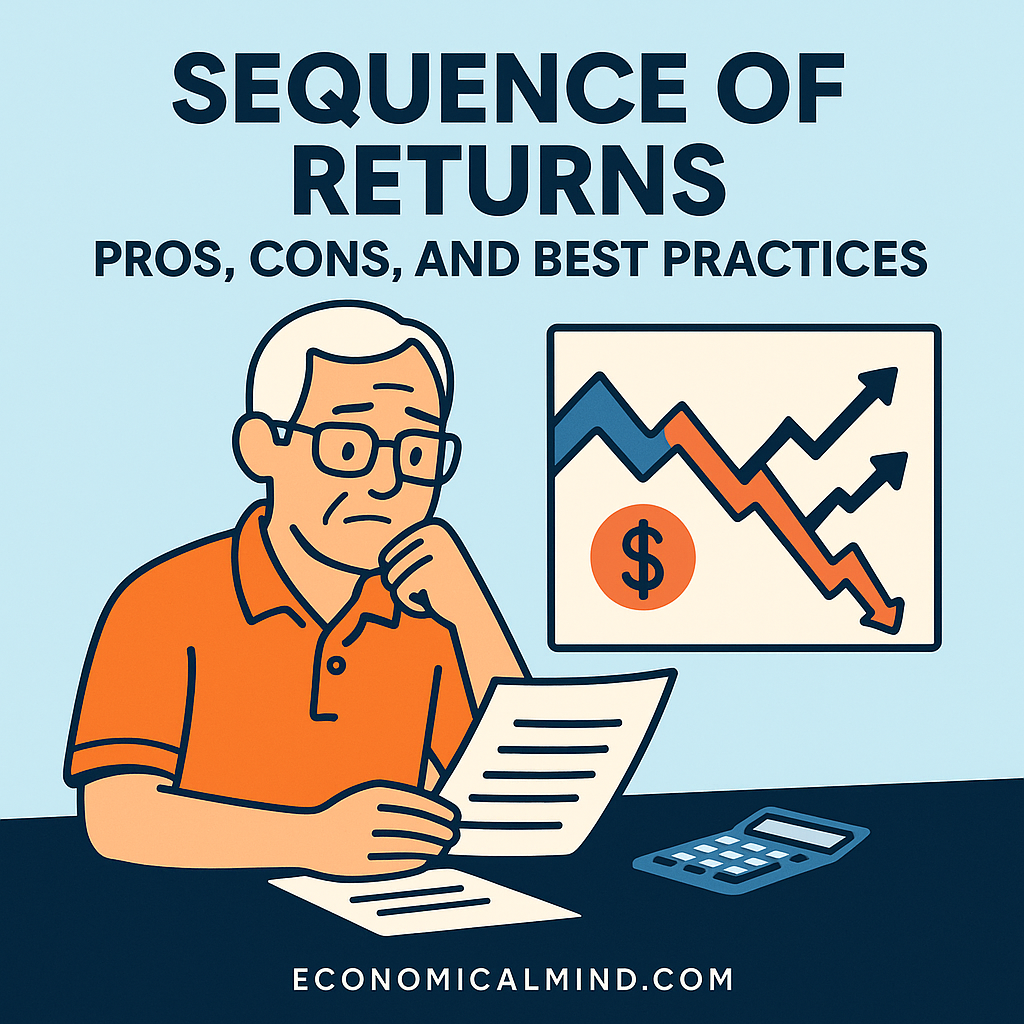
Most people know investment returns matter — but when those returns happen can be just as important. This timing risk is called the sequence of returns risk, and it can make or break your retirement plan. Here’s what it means, why it matters, and how to manage it wisely.
What Is Sequence of Returns Risk?
Sequence of returns risk refers to the danger of experiencing poor investment returns early in retirement when you’re also withdrawing funds. Even if your average annual return looks good on paper, bad timing at the start can drain your savings faster than expected.
Example: Two retirees with identical portfolios can end up with drastically different outcomes if one faces a market downturn in their first few years of retirement.
Pros of Understanding Sequence of Returns
1. Better Retirement Planning Awareness
Recognizing this risk helps you plan withdrawals more intelligently.
Example: You’ll know when to hold cash and when to stay invested.
2. More Control Over Spending
By adjusting withdrawals during market declines, you preserve long-term stability.
Example: Reducing spending temporarily can prevent portfolio depletion.
3. Stronger Emotional Resilience
Knowing that early downturns don’t equal failure helps retirees avoid panic selling.
Example: A written plan turns short-term fear into long-term confidence.
Cons and Challenges
1. Difficult to Predict Market Timing
No one can forecast exactly when markets will rise or fall.
Fix: Build flexibility into your withdrawal strategy instead of trying to time returns.
2. Can Limit Early-Retirement Lifestyle
Being overly cautious may cause retirees to spend less than they comfortably could.
Fix: Use a dynamic spending plan that adjusts with market conditions.
3. Requires More Active Management
Monitoring portfolio performance and adjusting withdrawals takes discipline.
Fix: Automate portfolio rebalancing and review annually with an advisor.
Best Practices for Managing Sequence of Returns Risk
1. Maintain a Cash Buffer
Keep 1–3 years of expenses in cash or short-term bonds to avoid selling investments during downturns.
2. Diversify Across Asset Classes
A mix of stocks, bonds, and real assets helps cushion volatility.
3. Use a Dynamic Withdrawal Strategy
Instead of withdrawing a fixed amount each year, adjust based on market performance and portfolio health.
4. Delay Social Security if Possible
Waiting increases your monthly benefit, providing a stable income stream later.
5. Consider Partial Annuities
Annuities can provide guaranteed income that reduces pressure on your investments.
6. Rebalance Regularly
Keep your portfolio aligned with target allocations — rebalancing can lock in gains and manage risk.
7. Avoid Panic Selling
Market dips early in retirement can trigger fear. Sticking to your plan is often the best move.
8. Simulate Scenarios
Run retirement simulations with varying return sequences to see how your plan holds up.
9. Use the “Bucket Strategy”
Separate your assets into short-, medium-, and long-term buckets to manage withdrawals efficiently.
10. Keep Investing During Retirement
Even in retirement, growth investments help your portfolio outpace inflation.
Key Takeaway
Sequence of returns risk is less about predicting the market and more about preparing for it. With the right structure — cash buffers, diversification, and disciplined withdrawals — you can weather any market sequence and keep your retirement on track.
